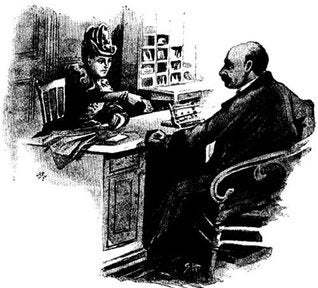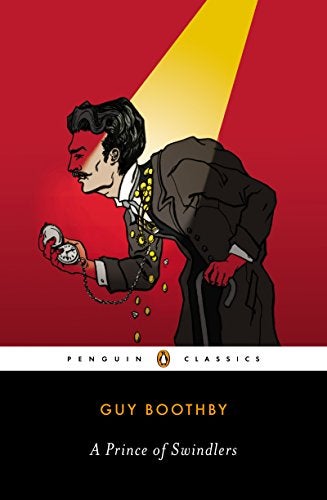Forget Sherlock Holmes and try these other Victorian detectives
Rivals, clones and parodies of Baker Street’s finest sprang to life in the late 19th century. Clare Clarke walks you through the best of the bunch, from Loveday Brooke to Flaxman Low

Your support helps us to tell the story
From reproductive rights to climate change to Big Tech, The Independent is on the ground when the story is developing. Whether it's investigating the financials of Elon Musk's pro-Trump PAC or producing our latest documentary, 'The A Word', which shines a light on the American women fighting for reproductive rights, we know how important it is to parse out the facts from the messaging.
At such a critical moment in US history, we need reporters on the ground. Your donation allows us to keep sending journalists to speak to both sides of the story.
The Independent is trusted by Americans across the entire political spectrum. And unlike many other quality news outlets, we choose not to lock Americans out of our reporting and analysis with paywalls. We believe quality journalism should be available to everyone, paid for by those who can afford it.
Your support makes all the difference.In December 1893, just six years after his first appearance and at the height of his popularity with the late-Victorian reading public, Sherlock Holmes, the world’s most famous fictional detective, was killed off by his creator Arthur Conan Doyle. In “The Final Problem”, published in The Strand magazine, Sherlock plunged over the Reichenbach Falls in a struggle with master criminal Professor Moriarty and both were swallowed by a cauldron of swirling water and seething foam. His body was not recovered.
At the time of the story’s publication, Doyle firmly believed that this would be the last of Holmes. He considered his detective fiction a lower stratum of literary achievement and felt that with Holmes out of the way, he could capitalise on his celebrity and attract an audience for his long historical novels. Authors are not always the best judges of their own work.
I’ve never found any evidence to support apocryphal stories of city clerks wearing black armbands after Sherlock’s death, but the public were unhappy with Holmes’s early departure. Some 20,000 Strand readers are reported to have cancelled their subscriptions to the magazine. Meanwhile, the editors of The Strand and its rival magazines clamoured to crown a fitting heir to Holmes.
For fans of Doyle’s detective stories, the good news is that they found dozens of detectives to take his place. A vast (and largely uncharted) treasure trove of detective stories was published in periodicals, newspapers and magazines between 1893 and 1900, as Holmes rivals, clones and parodies emerged to fill the great detective’s deerstalker hat and cape. Here are five of the best:
1. The Experiences of Loveday Brooke, Lady Detective (1894)
Loveday Brooke is the first female detective created by a female author (Catherine Louisa Pirkis). Appearing more than 25 years before female detectives were officially employed by the Metropolitan Police, private investigator Brooke is frequently asked by the police to assist with cases where a “feminine” perspective is required. Pirkis’s gendered twist on the Victorian detective genre sees Brooke’s “female methods” – such as gossip and gaining the trust of servants – trouncing those of her male contemporaries and exonerating wrongly-suspected women.
2. The Dorrington Deed-Box (1897)
Sherlock Holmes often asserted that he would have made “a highly efficient criminal”. In this collection of short stories, Arthur Morrison’s Horace Dorrington takes this notion to its furthest extreme.
Dorrington is a charming East End criminal with a very successful private detective business in the prosperous West End of the Victorian metropolis. Throughout his adventures, he lies to, steals from, poisons, blackmails and attempts to kill various clients and criminals. This is a thrillingly chaotic and unsettling portrait of a late-Victorian London pervaded by greed and crime.

3. A Prince of Swindlers (1897)
Guy Boothby’s collection of six short crime stories follows the adventures of Detective Klimo, the most talked-about detective in London. Working from his Park Lane mansion, his clients include the cream of London society who consult him when their jewels or paintings are stolen. The twist is that Klimo’s alter-ego is gentleman burglar Simon Carne, a master of disguise who has travelled to England from India to profit from the wealth collected in the imperial metropolis for the Queen’s jubilee celebrations.
4. Ghosts: Being the Experiences of Flaxman Low (1899)
As E and H Heron, mother and son team Kate O’Brien Prichard and Hesketh Prichard co-authored 12 stories featuring Flaxman Low, “the Sherlock Holmes of the ghost world”. They were first published as “Real Ghost Stories” in Pearson’s Magazine from 1898 to 1899. While Sherlock Holmes emphatically disavowed the supernatural – “the world is big enough for us, no ghosts need apply” – Low is open to its place in the world of modern crime fighting. By the series’ close, Low has seen off an array of ghosts, mummies, occult societies, killer plants and diabolical master criminals.
Low is not the first “occult detective” in the detective genre – that accolade belongs to LT Meade and John Eustace’s John Bell, who appeared in 1896 – he is the first investigator whose work accepts or proves, rather than disavows, the existence of the ghostly and occult forces behind the crimes he investigates.
5. The Brotherhood of the Seven Kings (1898)
While The Strand had many regular contributors who stepped in to supply detective fiction after Holmes’s “death” (notably all men), Irish writer Elizabeth Thomasina (LT) Meade went on to become the magazine’s most prolific contributor of crime stories in the late-Victorian and early Edwardian period, with six series published between 1893 and 1903.
In this series of stories, Meade adds a gendered twist to the master criminal narrative, with the creation and portrayal of a powerful female antihero, Madame Koluchy. Much like Doyle’s Moriarty, Koluchy is a scientist and a doctor, as well as the chief and queen of the Brotherhood of the Seven Kings, a nebulous Italian political organisation responsible for terrible crimes on English soil. She harnesses her scientific skills to carry out a series of deadly crimes utilising, among other things, X-rays, untraceable poisons and a virus carried by the tsetse fly, challenging the skills and authority of the very best British detectives.
Clare Clarke is an assistant professor of 19th century literature at Trinity College Dublin. This article first appeared on The Conversation.




Join our commenting forum
Join thought-provoking conversations, follow other Independent readers and see their replies
Comments